

Chenonceau
1960's photos
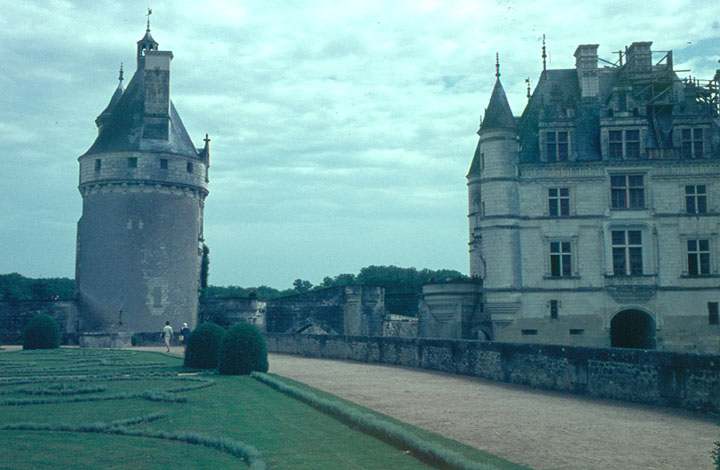
Marques Tower on the left
The estate of Chenonceau is
mentioned for the first time in writing towards the end of the XIth century.
From the XIIIth to the XVth century, the estate of Chenonceau, with its
unprepossessing feudal manor, was the property of the Marques family.
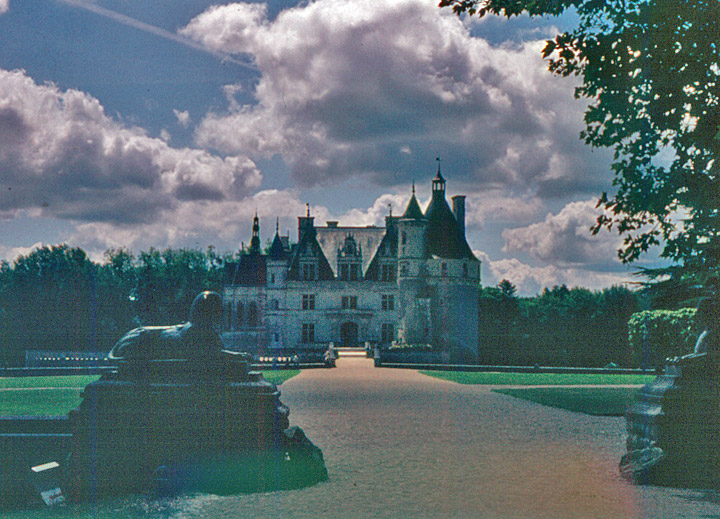
1411
A royal order to punish Jean Marques for an act of sedition included an order
for the destruction of the manor.
1432
Jean Marques had a castle and a fortified mill built to replace the lost manor
of Chenonceau.

1513
Pierre Marques, the heir of Jean, up to his eyes in debt, had to sell the
castle, which was readily purchased by Thomas Bohier, the General Tax Collector
for Normandie…

1515
Thomas Bohier razed all existing buildings and then undertook the construction
of a third generation of castle on Chenonceau. He retained, however, the donjon,
modified to fit the contemporary fashion, and the system of moats. He used the
pillars of the erstwhile mill as foundation stones for the new structure in the
middle of the river, reincorporating the previous square plan of the forecourt
of the old medieval castle delineated by the existing moats. During Thomas
Bohier’s absence in Italy, his wife, Catherine Briçonnet, personally took over
the construction of Chenonceau.
1517
The building of the castle was making good headway. As for the decoration, it
retained some of the severity of its former military style, but the exterior
ornamentation was inspired by the fashion of the time, adding an unusual
elegance to its gothic appearance.
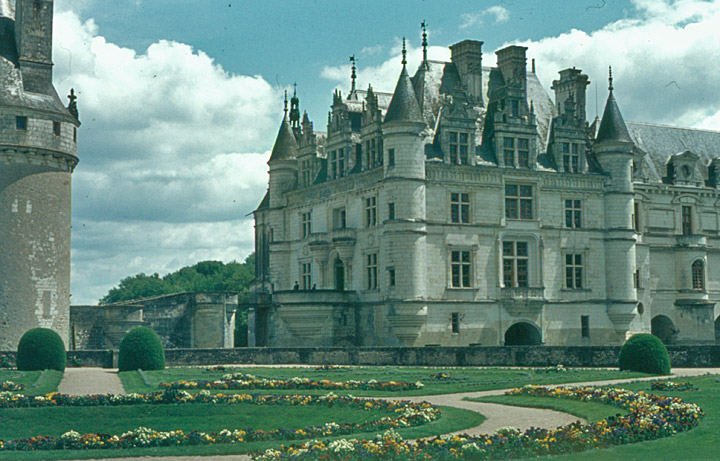
1521-22
The chapel was consecrated by Cardinal Bohier, a relative of Thomas. The castle
was completed and the surrounding estate laid out. Chenonceau was now worthy of
receiving the notables of the Kingdom. It was Catherine who established her
authority over the estate, taking readily to court life. The King, François I,
was twice a guest at the castle.
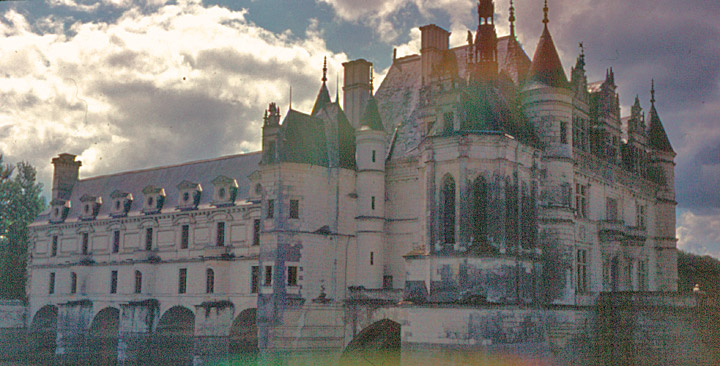
1535
After Thomas Bohier’s death in 1524 and Catherine’s death in 1526, their son
Antoine had to yield the castle to the Crown to pay off the debts incurred by
his father. The High Constable of Montmorency took possession of the castle in
the name of François I. The King, however, who was at the time engaged in the
building of Chambord, was only moderately interested in the castle of Chenonceau
and did not effect any improvements.
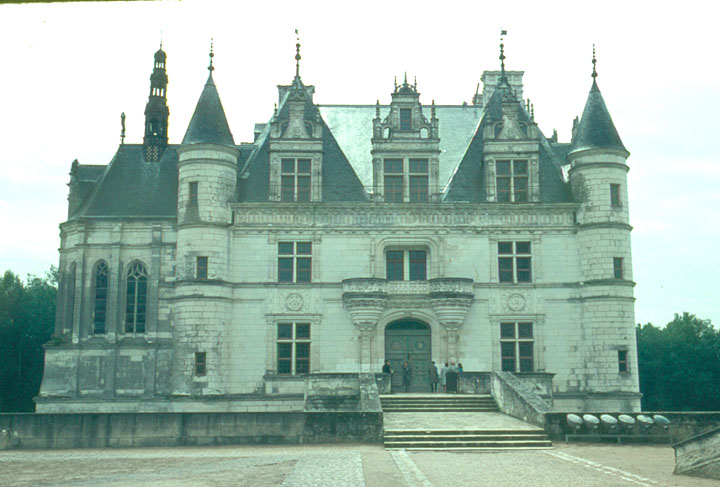
1539
Charles Quint, Emperor of Germany, Prince of the Netherlands and King of Spain,
the eternal rival of King François I, visited the castle of Chenonceau.
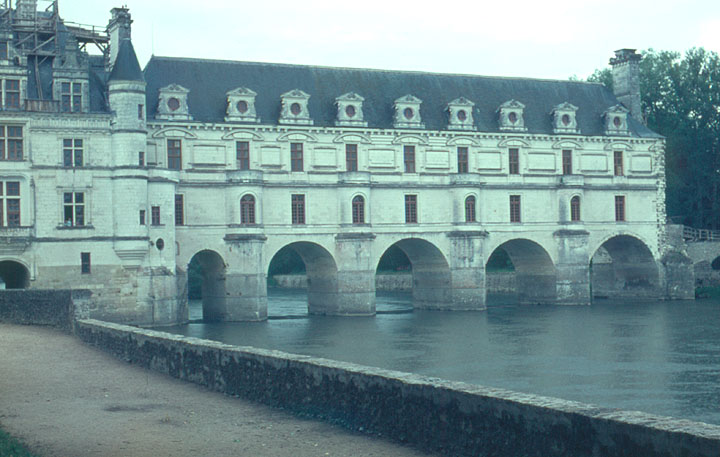
bridge over the river Cher
1547
When Henry II succeeded his father at the age of 28, his favourite, Diane of
Poitiers, was then 48. She was the widow, for the past twenty years, of the
Count of Brézé, the Grand Seneschal of France. Her beauty, the narrowness of her
waist, her fair skin and her rousset hair were legendary. Anxious to please his
favourite and to give her a residence worthy of her, the young King offered her
the castle of Chenonceau. The castle, however, belonged to the Crown and Diane
would have to wait until 1555 and to resort to legal artifices and other subtle
procedures to become its legitimate owner.
1551
While at Chenonceau, Diane was made Duchess of Valentinois and became one of the
most influential women in the Kingdom. Her success assured her of many enemies,
the most formidable of which was the Queen, Catherine de Medici, who envied her
influence over the King and the affairs of the country. To discover why Henri
preferred a mistress twenty years his senior, she even went as far as to have a
hole drilled in the wall of their bedroom.
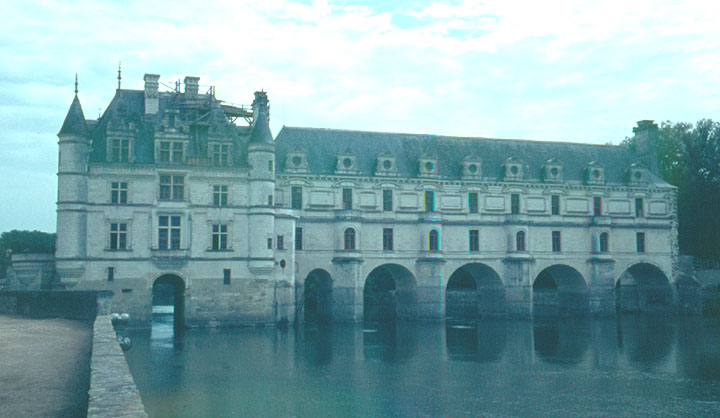
1552
The efforts of Diane of Poitiers were rewarded by the journey to Chenonceau of
the King and his Court. With the help of the bailiff, André Béreau, Diane ran
her then prosperous estate with unmistakable authority. Even if the expenditure
was onerous, receipts from the farm produce, royalties from vassals and fines
imposed by the castle court enabled to balance the budget. The garden was
gorgeous. The royal tennis courts were bordered with tall pine trees. Numerous
artists took up residence there and the entertainments (bals, tilting at the
ring, stag hunting) were never-ending and legion.
1555
The profits made through the cultivation of the estate and the confident
knowledge that the castle was hers encouraged Diane of Poitiers to further
embellish her property. She undertook new works and ressuscitated the former
owners’ idea of enlarging the castle and building a bridge to span the river
Cher…
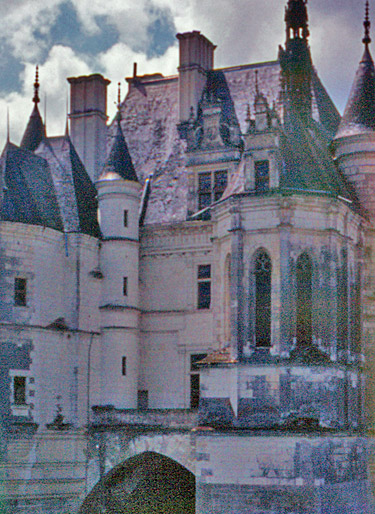
1559
During a tournament, King Henri II was fatally injured by Montgomery, the
Captain of the Scottish guards. His widow, Catherine de Medici, could now take
revenge and she demanded the handing over of Chenonceau. But the estate no
longer belonged to the Crown and she had to threaten Diane of Poitiers into
exchanging Chenonceau for the castle of Chaumont. Catherine de Medici, who was
both ambitious and authoritarian, took over the management of the estate and
devoted all her energies to erase the presence of Diane there. The castle became
a royal residence where lavish entertainments were given, the most famous one
being the feast for François II and Mary Stuart following the tragic outcome of
the Amboise conspiracy in 1560. Combinations of cannons and drums, water games
and fire works invested the style of Chenonceau with a new éclat.
1563
Anxious to leave her mark, Catherine de Medici transformed the gardens of
Chenonceau in accordance with the programme devised by Bernard Palissy in his
Drawing of a Delectable Garden.
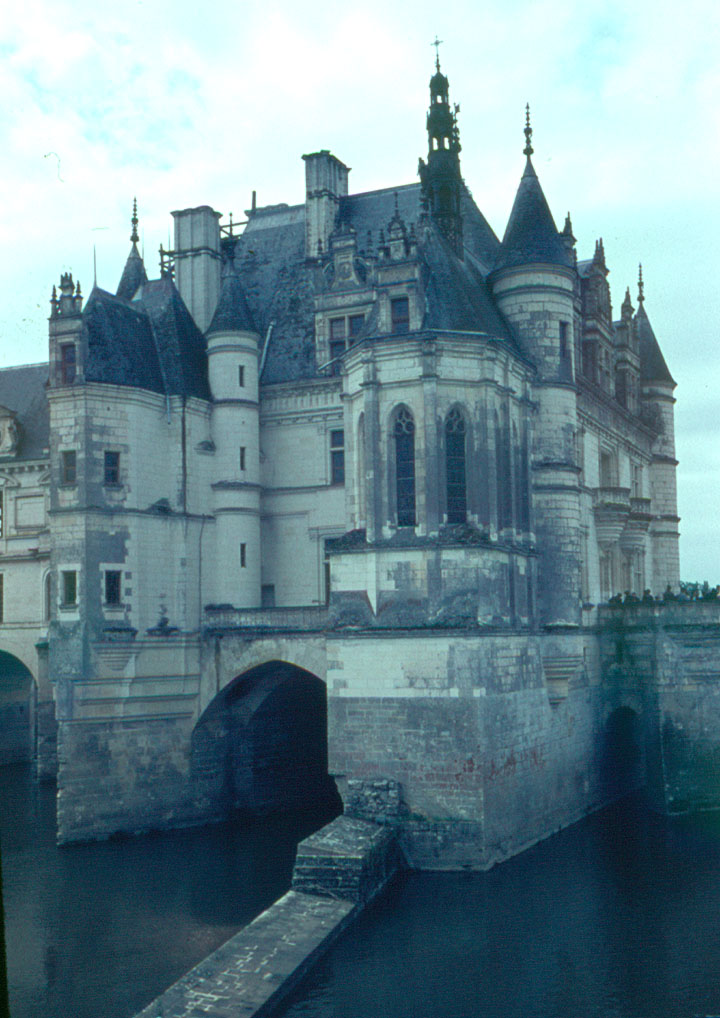
chapel on the right and the Medici library on the left
1576
Catherine de Medici embarked on some ambitious projects at Chenonceau: a grand
courtyard, the transformation of the windows of the entrance façade, which were
to be ornate with caryatids and the number of which was to be doubled, an
extension to the terrace towards the east between the chapel and the library and
the setting up of the gallery over the bridge, which was different from the
initial plan. But these extensive works required the incomes of both the Barony
of Levraux en Berry and the estate of Chenonceau.
1577
In May, during the feast given by Catherine in honour of her son, the new king,
Henri III, the grand gallery of the castle with its arches that spanned the Cher
was inaugurated. Two other queens were also present: Louise, Henri III’s wife,
and Marguerite de Navarre, the wife of the future Henri IV. The reception with
its songs, dances, shows and concerts remains the climax of the golden era of
Chenonceau.
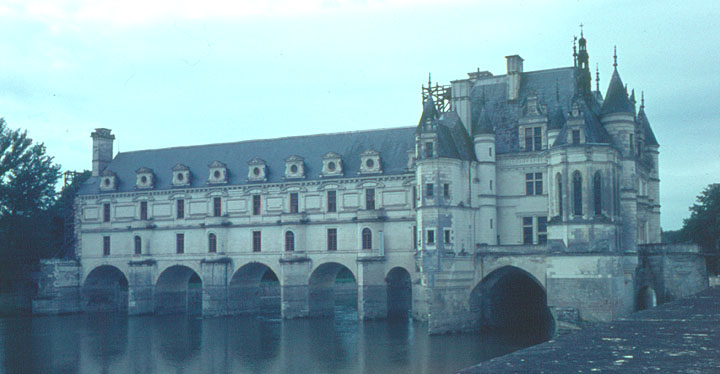
1589
Catherine de Medici died in Blois on January 5, 1589 at the age of seventy. She
bequeathed the castle to Louise of Lorraine, the Queen and the wife of her son
Henri III. The extensive transformations undertaken in 1576 were not yet
finished: except for the gallery, only one wing of the main courtyard, the
building of the Dômes, was completed. Although Louise had married a man who
preferred men to her, she was a loving and considerate wife. But that same year,
Henri was murdered in Saint-Cloud. Overcome with grief, Louise gave way to
melancholy and never recovered. Soon called « the White Queen » by the
villagers, she turned Chenonceau into a place of meditation and solitude.
Symbolically, she stored all the velvet and satin dresses for the feasts in a
large chest in the gallery. After years of light and music, silence and darkness
fell upon Chenonceau.
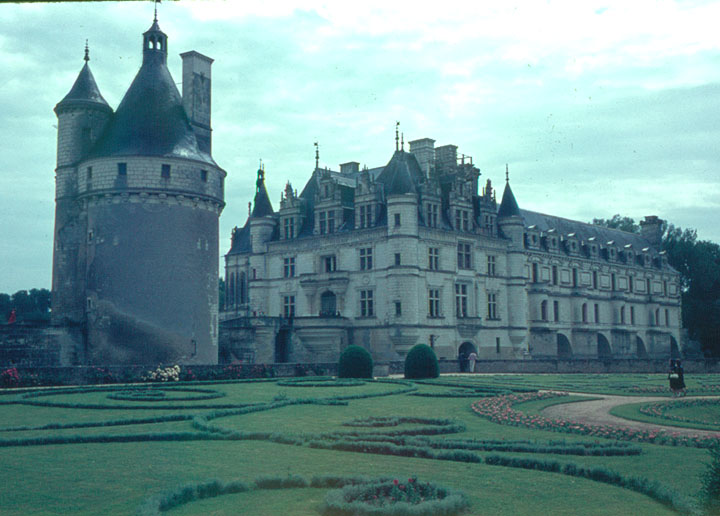
a part of the formal gardens
Prestigious jewel of the Renaissance, the chateau of Chenonceau is surrounded by
two famous gardens, one upstream, designed by Diane de Poitiers, the other,
downstream by Catherine de Medicis.
In the Cellar of the Domes (entrance in the Green Garden) you will discover the Domain wines.